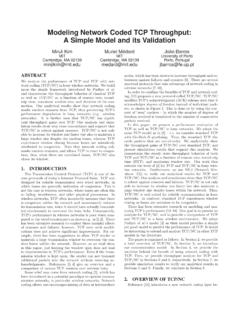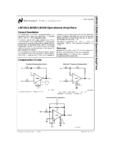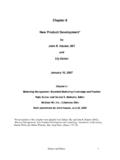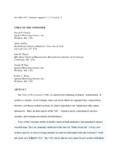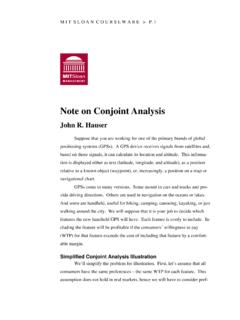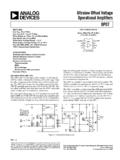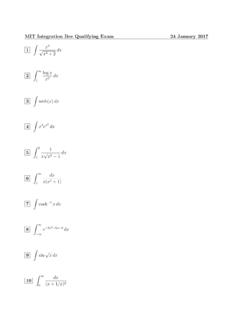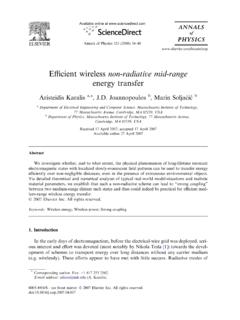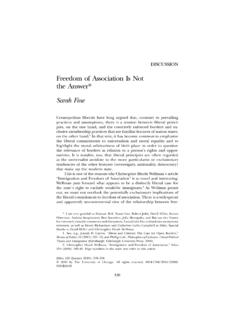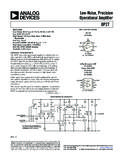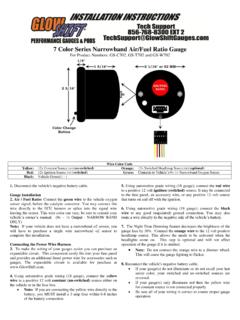Transcription of HST-582J/6.555J/16.456J Biomedical Signal and Image ...
1 HST-582 Signal and Image ProcessingSpring 2008 Chapter 15 - BLIND SOURCE SEPARATION:Principal & Independent Component Analysisc Clifford 2005-2008 IntroductionIn this chapter we will examine how we can generalize the idea oftransforming a timeseries into an alternative representation, such as the Fourier (frequency) domain, to facil-itate systematic methods of either removing (filtering) or adding (interpolating) data. Inparticular, we will examine the techniques ofPrincipal Component Analysis(PCA) usingSingular Value Decomposition(SVD), andIndependent Component Analysis(ICA). Bothof these techniques utilize a representation of the data in a statistical domain rather thana time or frequency domain. That is, the data are projected onto a new set of axes thatfulfill some statistical criterion, which implies independence, rather than a set of axes thatrepresent discrete frequencies such as with the Fourier transform, where the important difference between these statistical techniques and Fourier-based tech-niques is that the Fourier components onto which a data segment isprojected are fixed,whereas PCA- or ICA-based transformationsdependon the structure of the data being ana-lyzed.
2 The axes onto which the data are projected are thereforediscovered. If the structureof the data (or rather the statistics of the underlying sources) changes over time, then theaxes onto which the data are projected will change projection onto another set of axes (or into another space) is essentially a method forseparating the data out into separate components orsourceswhich will hopefully allowus to see important structure more clearly in a particular projection. That is, the directionof projection increases the Signal -to-noise ratio (SNR) for a particular Signal source. Forexample, by calculating the power spectrum of a segment of data, we hope to see peaksat certain frequencies. The power (amplitude squared) along certain frequency vectorsis therefore high, meaning we have a strong component in the Signal at that discarding the projections that correspond to the unwanted sources (such as the noiseor artifact sources) and inverting the transformation, we effectively perform a filteringof the recorded observation.
3 This is true for both ICA and PCA as well as Fourier-basedtechniques. However, one important difference between these techniques is that Fouriertechniquesassumethat the projections onto each frequency component are independentof the other frequency components. In PCA and ICA we attempt tofinda set of axes whichare independent of one another in some sense. We assume there are aset of independent1(The structure of the data can change because existing sources are non-stationary, new Signal sources manifest, orthe manner in which the sources interact at the sensor in the data, but do not assume their exact properties. (Therefore, they may overlapin the frequency domain in contrast to Fourier techniques.) We then define some measureof independence and attempt todecorrelatethe data by maximising this measure for (orbetween) projections onto each axis of the new space which we have transformed the datainto.)
4 Thesourcesare the data projected onto each of the new axes. Since wediscover,rather than define the the new axes, this process is known asblind source is, we do not look for specific pre-defined components, such as theenergy at a specificfrequency, but rather, we allow the data to determine the PCA the measure we use to discover the axes isvarianceand leads to a set of orthog-onal axes (because the data are decorrelated in a second order sense and the dot productof any pair of the newly discovered axes is zero). For ICA this measure is based on non-Gaussianity, such askurtosis, and the axes are not necessarily orthogonal. Kurtosis is thefourth moment (mean, variance, and skewness are the first three) and is a measure of hownon-Gaussian is a probability distribution function (PDF).
5 Large positive values of kurtosisindicate a highly peaked PDF that is much narrower than a Gaussian. A negative kurtosisindicates a broad PDF that is much wider than a Gaussian (see ). Our assumptionis that if we maximize the non-Gaussianity of a set of signals, then they are maximallyindependent. This comes from the central limit theorem; if we keep adding independentsignals together (which have highly non-Gaussian PDFs), we will eventually arrive at aGaussian distribution. Conversely, if we break a Gaussian-likeobservation down into aset of non-Gaussian mixtures, each with distributions that are as non-Gaussian as possi-ble, the individual signals will be independent. Therefore, kurtosis allows us to separatenon-Gaussian independent sources, whereas variance allows usto separate independentGaussian noise simple idea, if formulated in the correct manner, can lead to some surprising results,as you will discover in the applications section later in these notes and in the accompa-nying laboratory.
6 However, we shall first map out the mathematicalstructure required tounderstand how these independent sources are discovered and what this means about ourdata (or at least, our beliefs about the underlying sources). We shall also examine theassumptions we must make and what happens when these assumptions break Signal & noise separationIn general, an observed (recorded) time series comprises of both thesignalwe wish to an-alyze and anoisecomponent that we would like to remove. Noise or artifact removal oftencomprises of a data reduction step (filtering) followed by a data reconstruction technique(such as interpolation). However, the success of the data reduction and reconstructionsteps is highly dependent upon the nature of the noise and the definition, noise is the part of the observation that masks the underlying Signal we wishto analyze2, and in itself adds no information to the analysis.
7 However, for anoise Signal tocarry no information, it must bewhitewith a flat spectrum and an autocorrelation function2It lowers the SNR!2(ACF) equal to an impulse3. Mostrealnoise is not really white, but colored in some fact, the termnoiseis often used rather loosely and is frequently used to describe signalcontamination. For example, muscular activity recorded on the electrocardiogram (ECG)is usually thought of as noise or artifact. (See Fig. 1.) However, increased muscle artifacton the ECG actually tells us that the subject is more active than when little or no musclenoise is present. Muscle noise is therefore a source of information about activity, althoughit reduces the amount of information we can extract from the signalconcerning the cardiaccycle.
8 Signal and noise definitions are therefore task-relatedand change depending on thenature of the information you wish to extract from your observations. In this sense, musclenoise is just another independent information source mixed intothe 1 illustrates the range of Signal contaminants for the ECG4. We shall also examinethe statistical qualities of these contaminants in terms of estimates of their PDFs since thepower spectrum is not always sufficient to characterize a Signal . The shape of a PDF canbe described in terms of itsGaussianity, or rather, departures from this idealized form(which are therefore called super- or sub-Gaussian). The fact that these signals are notGaussian turns out to be an extremely important quality, which is closely connected to theconcept of independence, which we shall exploit to separate contaminants form the noise is often modeled asGaussian white noise5, this is often not the case.
9 Noise isoften correlated (with itself or sometimes the source of interest), or concentrated at certainvalues. For example, 50Hz or 60Hz mains noise contamination is sinusoidal, a waveformthat spends most of its time at the extreme values (near its turning points), rather than atthe mean, as for a Gaussian process. By considering departures from the ideal Gaussiannoise model we will see how conventional techniques can under-perform and how moresophisticated (statistical-based) techniques can provide improved will now explore how this is simply another form of data reduction (or filtering)through projection onto a new set of axes or followed by data reconstruction throughprojection back into the original observation space.
10 By reducing the number of axes (or di-mensions) onto which we project our data, we perform a filtering operation (by discardingthe projections onto axes that are believed to correspond to noise).By projecting from adimensionally reduced space (into which the data has been compressed) back to the orig-inal space, we perform a type of interpolation (by adding information from a model thatencodes some of our prior beliefs about the underlying nature of the Signal or informationderived directly from a observation data). Matrix transformations as filtersThe simplest filtering of a time series involves the transformation of a discrete one di-mensional (N= 1) time seriesx[m], consisting ofMsample points such thatx[m] =3 Therefore, no one-step prediction is possible.
